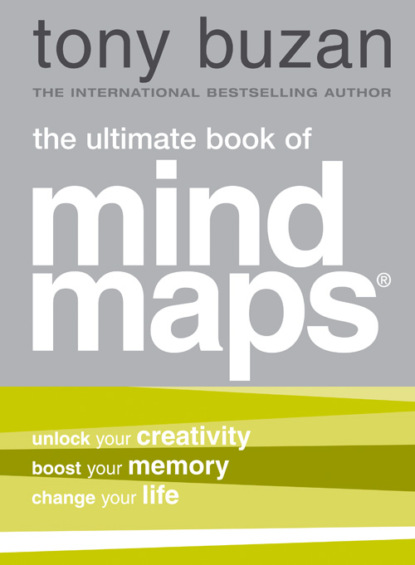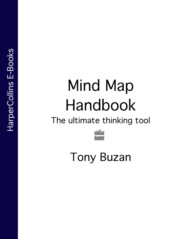По всем вопросам обращайтесь на: info@litportal.ru
(©) 2003-2024.
✖
The Ultimate Book of Mind Maps
Автор
Год написания книги
2018
Настройки чтения
Размер шрифта
Высота строк
Поля
1
chapter 1
What Is a Mind Map
?
A Mind Map is ‘the whole-brain alternative to linear thinking. [It] reaches out in all directions and catches thoughts from any angle.’
Michael Michalko, Cracking Creativity
Overview of Chapter 1:
How Mind Maps Can Help You (#ulink_27d4d766-64df-50d9-91e6-dfe8acefaa4e)
What You Need to Create a Mind Map (#ulink_e88c6873-c4cd-5855-858b-b1e1e7ef6519)
Seven Steps to Making a Mind Map (#ulink_a550e882-b57c-54bf-80d7-f01dfd803e6c)
Creating Your First Mind Map (#ulink_e737be6e-708a-5c39-9234-03b087be1b7f)
A Mind Map is the ultimate organizational thinking tool – the Swiss army knife of the brain!
A Mind Map is the easiest way to put information into your brain and to take information out of your brain – it’s a creative and effective means of note-taking that literally ‘maps out’ your thoughts. And it is so simple.
You can compare a Mind Map to a map of a city. The centre of your Mind Map is like the centre of the city. It represents your most important idea. The main roads leading from the centre represent the main thoughts in your thinking process; the secondary roads represent your secondary thoughts, and so on. Special images or shapes can represent sites of interest or particularly interesting ideas.
Compare a Mind Map to a map of a city
Just like a road map, a Mind Map will:
Give an overview of a large subject or area.
Enable you to plan routes or to make choices, and will let you know where you are going and where you have been.
Gather together large amounts of data in one place.
Encourage problem solving by allowing you to see new creative pathways.
Be enjoyable to look at, read, muse over, and remember.
Mind Maps are also brilliant route-maps for the memory, allowing you to organize facts and thoughts in such a way that your brain’s natural way of working is engaged right from the start. This means that remembering and recalling information later is far easier and more reliable than when using traditional note-taking techniques.
All Mind Maps have some things in common. They all use colour. They all have a natural structure that radiates from the centre. And they all use curved lines, symbols, words, and images according to a set of simple, basic, natural, and brain-friendly rules. With a Mind Map, a long list of boring information can be turned into a colourful, highly organized, memorable diagram that works in line with your brain’s natural way of doing things.
How Can Mind Maps Help You?
Mind Maps can help you in many, many ways! Here are just a few.
Mind Maps can help you to:
plan
communicate
be more creative
save time
solve problems
concentrate
organize and clarify your thoughts
remember better
study faster and more efficiently
see the ‘whole picture’
save trees!
According to Michael Michalko, in his best-selling book Cracking Creativity, a Mind Map:
activates your whole brain
clears your mind of mental clutter
allows you to focus on the subject
helps demonstrate connections between isolated pieces of information
gives a clear picture of both the details and the big picture
allows you to group and regroup concepts, encouraging comparisons between them
requires you to concentrate on your subject, which helps get the information about it transferred from your short-term memory to your long-term memory
In The Ultimate Book of Mind Maps you will find many practical examples of how you can use Mind Maps to help plan and organize your life for maximum success, to come up with amazing, creative new ideas, and to absorb new facts and information effortlessly.
You will also get to know your brain better and find out how to make it easier to learn and remember information. If you understand how to help your brain work for you, you will be able to unlock your full mental and physical potential.
The Great Geniuses and Note-making
When you start Mind Mapping, you will be joining the pantheon of great geniuses who all used the major elements of the Mind Map guidelines to make their thoughts visible, and thus to help them and others make great creative leaps forward in their disciplines. These geniuses include:
Leonardo da Vinci, voted ‘The Brain of the Last Millennium’











